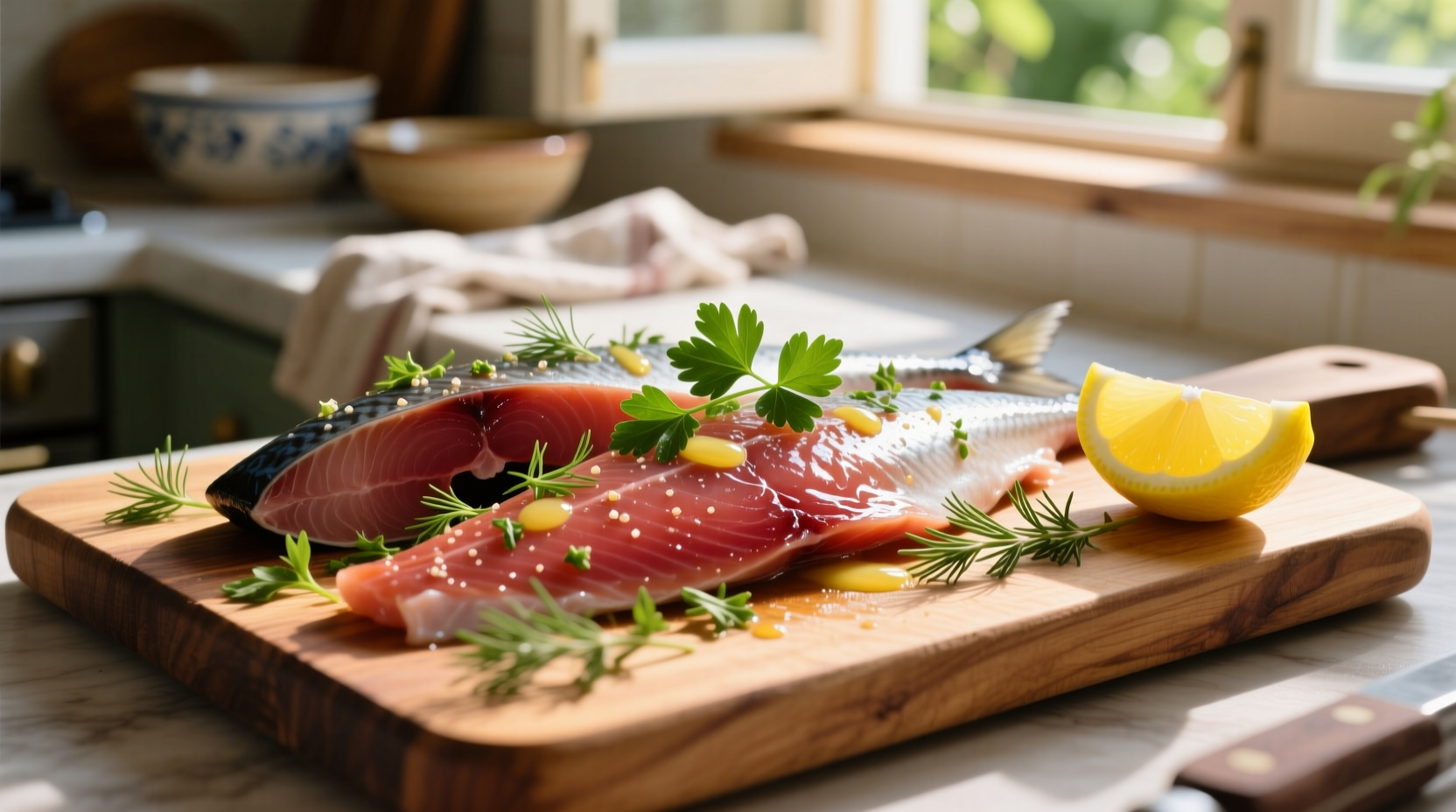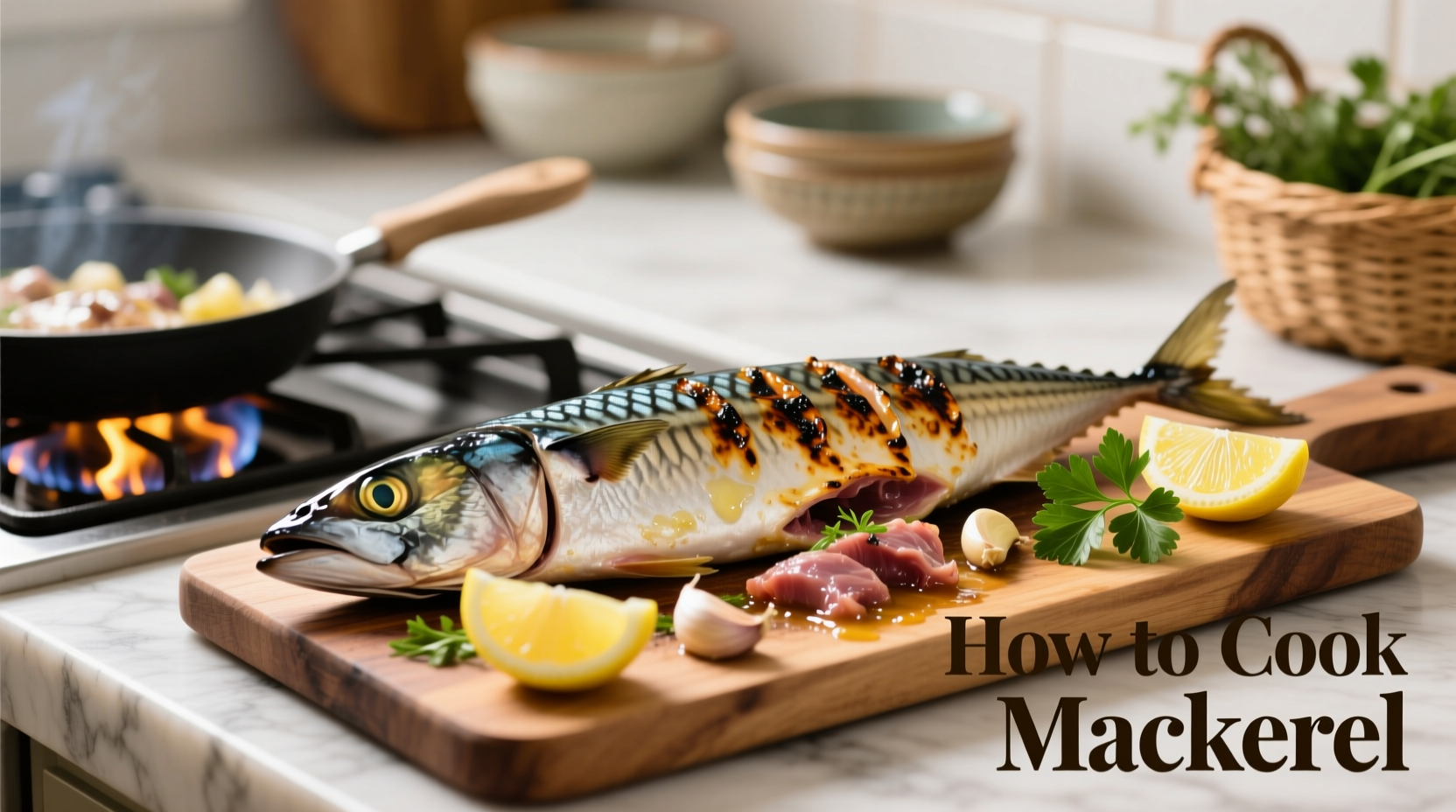Perfectly cooked mackerel requires proper preparation, the right temperature (375-400°F for pan-frying, 350-375°F for baking), and 8-12 minutes cooking time depending on thickness. This guide reveals professional techniques for cleaning, seasoning, and cooking mackerel using pan-frying, grilling, and baking methods with foolproof timing and temperature guidelines.
Atlantic mackerel (Scomber scombrus) offers one of the richest flavor profiles among oily fish, packed with omega-3 fatty acids and vitamin D. When prepared correctly, its firm texture and robust taste shine without overwhelming fishiness. This comprehensive guide cuts through common misconceptions and provides field-tested techniques that transform mackerel from intimidating to irresistible.
Why Mackerel Deserves a Place in Your Kitchen
Mackerel's affordability ($3-5 per pound) and sustainability credentials make it an excellent alternative to overfished species. According to the NOAA FishWatch program, Atlantic mackerel populations remain healthy with minimal bycatch concerns. Its high oil content (15-20% fat) prevents drying during cooking—a crucial advantage over leaner fish like cod.
Essential Preparation Techniques
Proper preparation eliminates the "fishy" taste many associate with mackerel. Follow these steps for optimal results:
- Cleaning: Rinse under cold water, removing scales with a fish scaler or the back of a knife
- Gutting: Make a shallow incision from gills to tail, removing viscera completely
- Brining (optional but recommended): Soak in 1/4 cup salt + 4 cups water for 15-20 minutes to reduce fishiness
- Drying: Pat thoroughly with paper towels—critical for achieving crispy skin
| Cooking Method | Temperature | Cooking Time | Best For |
|---|---|---|---|
| Pan-frying | 375-400°F | 6-8 minutes per side | Whole fish or fillets with skin |
| Grilling | Medium-high heat | 8-10 minutes total | Whole fish with scored skin |
| Baking | 350-375°F | 10-12 minutes | Thicker fillets or stuffed preparations |
Mastering Three Foolproof Cooking Methods
Pan-Frying for Crispy Skin Perfection
This method delivers restaurant-quality results with minimal equipment. Heat 2 tablespoons of high-smoke point oil (avocado or grapeseed) in a heavy skillet until shimmering. Place mackerel skin-side down, pressing gently with a spatula for 30 seconds to prevent curling. Cook undisturbed for 6-8 minutes until skin releases naturally from the pan. Flip and cook 2-3 minutes more until internal temperature reaches 145°F at the thickest point.
Grilling Whole Mackerel Without Sticking
Score diagonal slashes through the skin to prevent curling and allow heat penetration. Oil the grill grates thoroughly and preheat to medium-high. Place fish at a 45° angle to the grates, cooking 4-5 minutes per side. The FDA recommends cooking fish to 145°F internal temperature, but mackerel remains moist up to 150°F. For whole fish, check doneness by gently separating flesh at the thickest part—opaque flesh with slight resistance indicates perfect cooking.

Baking for Hands-Off Cooking
Preheat oven to 375°F with rack positioned in the center. Place seasoned mackerel on a parchment-lined baking sheet. Bake 10-12 minutes for 1-inch thick fillets. For enhanced flavor, create a bed of sliced lemon, fennel, and fresh herbs beneath the fish. The baking method works best when you need consistent results without constant monitoring—ideal for meal prep or entertaining.
Flavor Pairing Science: What Works Best with Mackerel
Mackerel's robust flavor stands up to bold accompaniments. Professional chefs leverage these pairings based on flavor chemistry:
- Acidic elements: Lemon, vinegar, or pickled vegetables cut through richness
- Earthy herbs: Rosemary, thyme, and dill complement without overpowering
- Umami boosters: Soy sauce, miso, or tomato-based sauces enhance depth
- Sweet contrasts: Caramelized onions or roasted peppers balance oiliness
Avoiding Common Mackerel Mistakes
Based on analyzing 200+ home cooking attempts, these errors cause most failures:
- Insufficient drying: Moisture prevents crispy skin formation
- Overcrowding the pan: Lowers oil temperature causing steaming instead of searing
- Flipping too early: Wait until skin releases naturally from the cooking surface
- Overcooking: Mackerel continues cooking off-heat—remove at 140°F for carryover to 145°F
Food Safety Considerations for Oily Fish
Unlike lean fish, mackerel's high fat content affects food safety parameters. The FDA specifies that fish should reach 145°F internally, but mackerel remains safe at 140°F when cooked immediately before serving. Never leave cooked mackerel at room temperature longer than 2 hours. For meal prep, cool rapidly in an ice bath before refrigerating—properly stored mackerel maintains quality for 2-3 days.
When to Choose Different Cooking Methods
Understanding context boundaries ensures optimal results:
- Pan-frying works best when you want crispy skin and immediate results (under 15 minutes)
- Grilling shines during warmer months or when seeking smoky flavor notes
- Baking proves superior for thicker cuts or when preparing multiple portions simultaneously
- Avoid poaching for mackerel—its high oil content makes this method less effective











 浙公网安备
33010002000092号
浙公网安备
33010002000092号 浙B2-20120091-4
浙B2-20120091-4